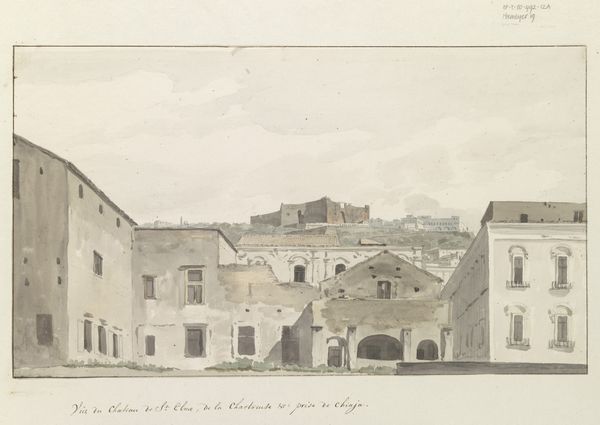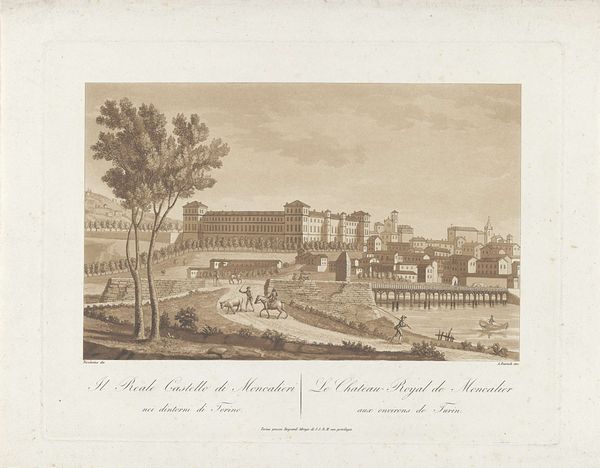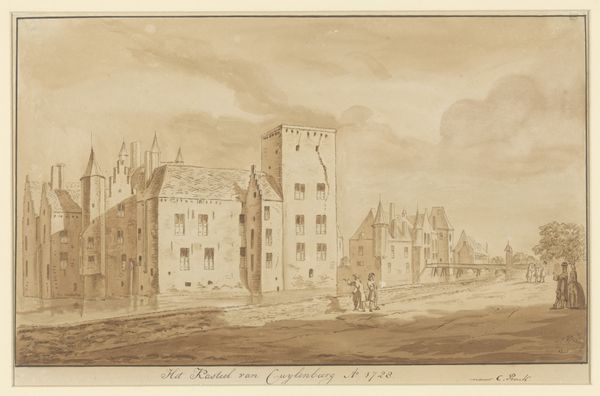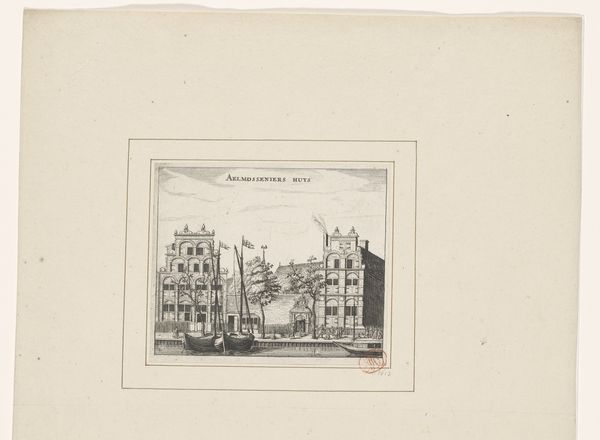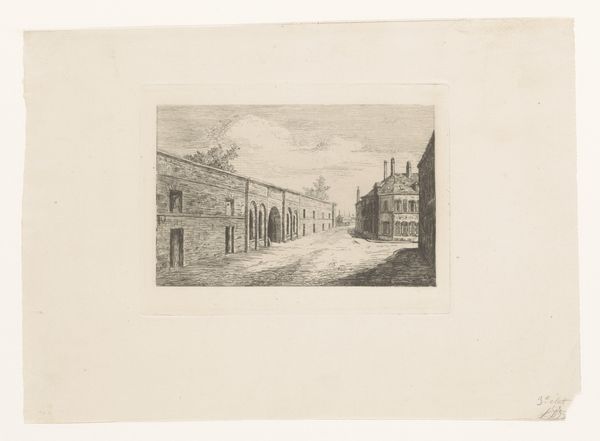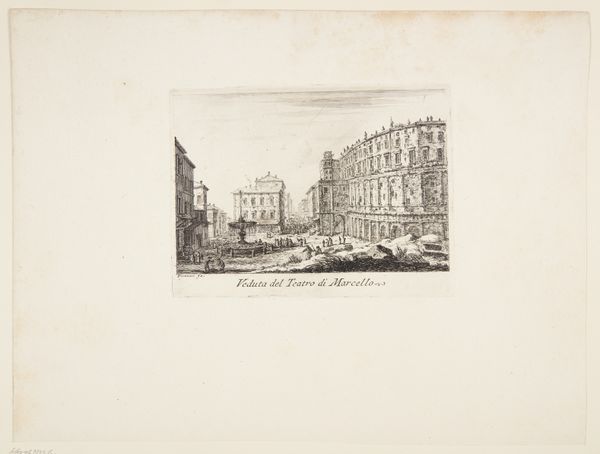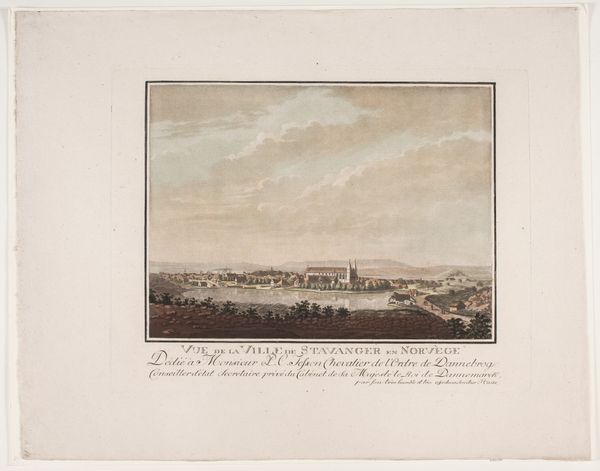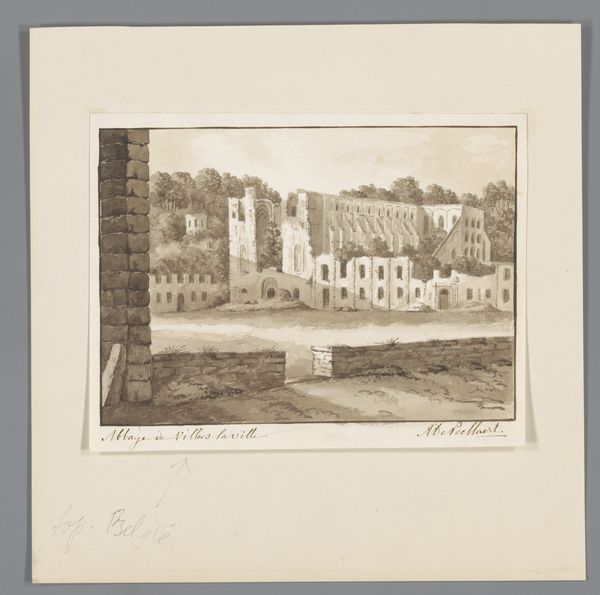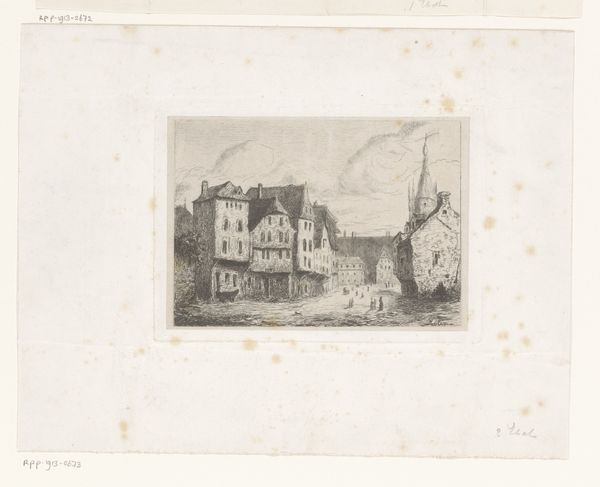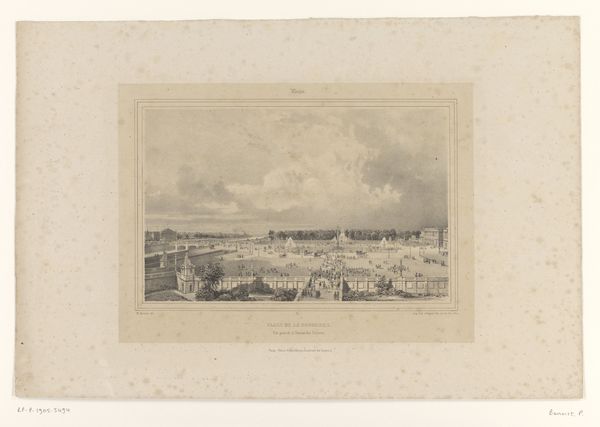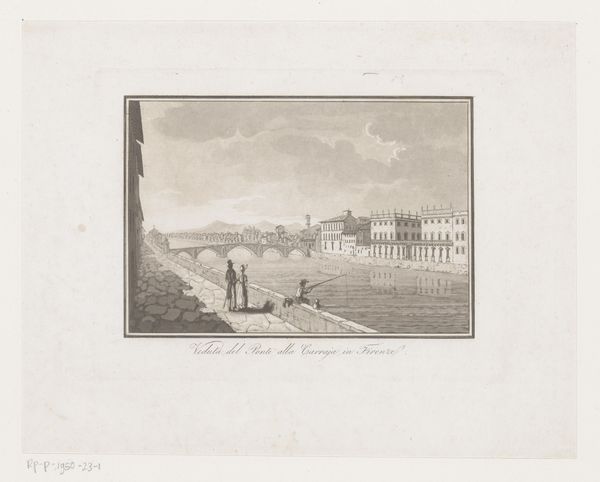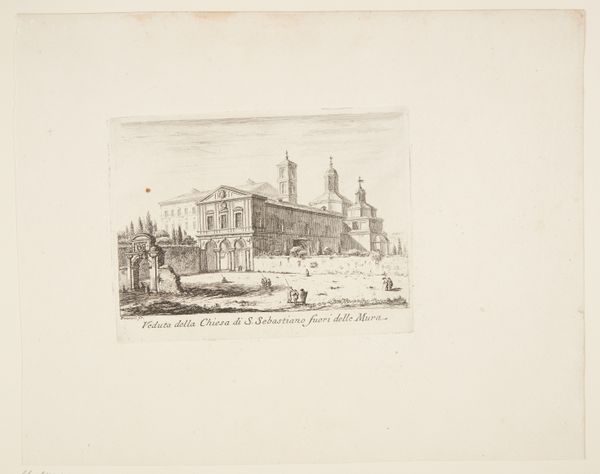
Oude paleis van koningin Jeanne bij het verlaten van Napels via de Porta Capuana 1778
0:00
0:00
drawing, watercolor
#
drawing
#
neoclacissism
#
landscape
#
watercolor
#
cityscape
#
watercolor
Dimensions: height 185 mm, width 248 mm
Copyright: Rijks Museum: Open Domain
Curator: This watercolor, "Oude paleis van koningin Jeanne bij het verlaten van Napels via de Porta Capuana," was created in 1778 by Louis Ducros. It currently resides in the Rijksmuseum. Editor: It's fascinating. There's an austere simplicity about the muted tones and the rigid structure in the foreground; a row of squared, stone monoliths that form an abrupt picture plane. It is quite despondent! Curator: The stark aesthetic you observe connects to the rising Neoclassical movement, a deliberate return to order and reason after the excesses of the Rococo period. Notice the careful rendering of the palace in the background; ruins are in a very calm almost elegiac framing here. The entire scene seems carefully balanced and composed. Editor: Balanced, yes, but also fragmented, like a memory fading at the edges. And those heavy stone blocks—they feel almost like tombstones, emphasizing the loss of an era. Do you think that Ducros had something like this in mind when choosing this angle and perspective? Curator: Ducros would've undoubtedly been aware of the emotional weight associated with ruins, as well as the romanticism which surrounded abandoned or former power centers, in a sense this piece has a rather literal message that there are rulers that can't come back. He positions Queen Jeanne's departure from Naples as a potent symbol of waning power, particularly poignant given Naples' tumultuous history with foreign rulers. The city gates themselves become markers of transition. Editor: The formal qualities really drive home that idea; the subdued palette mirroring a feeling of subdued majesty, the somewhat cold execution making that departure seem almost inevitable. One must admit it's a powerful statement, encoded in very quiet visual language. Curator: Absolutely. Even his choice of watercolor reinforces the transient nature of the scene, it is quite literally ephemeral. Editor: It certainly gives a modern viewer much to think about. It goes without saying that our perceptions are filtered through modern eyes! I am extremely satisfied to hear what you uncovered from within it all!
Comments
No comments
Be the first to comment and join the conversation on the ultimate creative platform.
